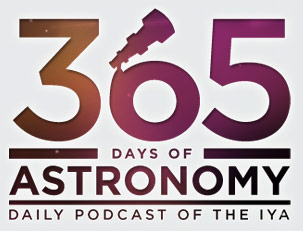An Impromptu Cosmic Ray Experiment February 28, 2011
Posted by jcconwell in Astronomy, Cosmic Rays.Tags: Cloud Chamber, Cosmic ray
1 comment so far
Hannah and Dan are in my astro techniques course this semester. I guess they were just frustrated waiting for the clouds to clear all through February. So they took observations into their own hands. Remembering a story from Dr. Pakey, they decided to build a cloud chamber late last Thursday after class to detect cosmic rays.
Open House Tonight February 25, 2011
Posted by jcconwell in Observatory.Tags: Eastern Illinois University, EIU, Observatory
add a comment
Observatory Open House tonight, Friday , February 25, at 8:00 PM, rain or shine. If it’s clear we will open up the dome and look at the last wonders of the winter constellations tonight.
THE SIZE OF STARS February 22, 2011
Posted by jcconwell in stars.Tags: Size of Stars, stars
add a comment
This was posted today on astronomy picture of the day, but it’s so well done I just had to put it here also.
New PODCAST:FINDING EXOPLANETS February 18, 2011
Posted by jcconwell in planets, Podcast.Tags: 365 days of astronomy, Eastern Illinois University, exoplanet, Podcast
add a comment
Sponsored by the Physics Department at Eastern Illinois University
GO TO FINDING EXOPLANETS PART 4
This podcast discusses the topic of Exoplanets and life on other planets out of our solar system
Thomas HofstätterBio: Born in 1993 near Vienna, Austria, Europe. Upper High School with focus on Computer Science.Interested in extreme small and extreme big, devious and uninvestigated things.Thomas Hofstätter main aim is to bring astronomy to public and to establish secular interest in astronomy, physics and mathematics. Host of :: The Hidden Space Project :: at
Solar eruption aimed at Earth February 17, 2011
Posted by jcconwell in Astronomy, Solar and Space weather, stars.Tags: Solar, solar flare, sunspot 1158, Sunspots
add a comment
We are coming off the bottom of the 11 year sunspot cycle, so the sun is getting more active. As the internal magnetic field of the sun winds up, the field bursts out of the surface in regions known as sunspots. Sunspots are cooler regions, hence they look darker, on the solar surface that have large magnetic fields. They can form in groups, and as part of their dynamics, they can release solar flares . Sunspot 1158 is a group of 4 sunspots that just had such a flare. The eruption can be seen in the video above taken by the SDO satillite and the optical image is below.
Two forms of radiation come from an eruption, the electromagnetic radiation arrives first, just 500 seconds after the eruption. Then come the particles (mostly protons, with some Helium nuclei ) called the solar mass ejection. Since the particles travel much slower it can take up to several days to get to the Earth …and that is only if the spots are aimed at us.
The Chinese have reported some disruption in shortwave radio traffic. Very intense flares can cause damage to some satellites and power grids. This one however should just produce a light show, the aurora for people in more northern latitudes.
The NOAA space weather prediction site has aurora maps to check if you can see the Northern lights.
Astronomy Club Tonight! February 16, 2011
Posted by jcconwell in Astronomers, Astronomy.Tags: Eastern Illinois University, EIU
add a comment
Astronomy Club meeting will take place this Wednesday Feb. 16th at 8pm in room 2153 of the physical science building.
Professor Linton, an Astronomy instructor, will be giving a talk about the trip he recently took. He visited places of great scientific significance in Europe including Italy and Switzerland, the stomping grounds of Galileo and Einstein respectively. As any of you who have taken a class with Mr. Linton know, he is a skilled lecturer. You don’t want to miss it! Hope to see everyone there.





